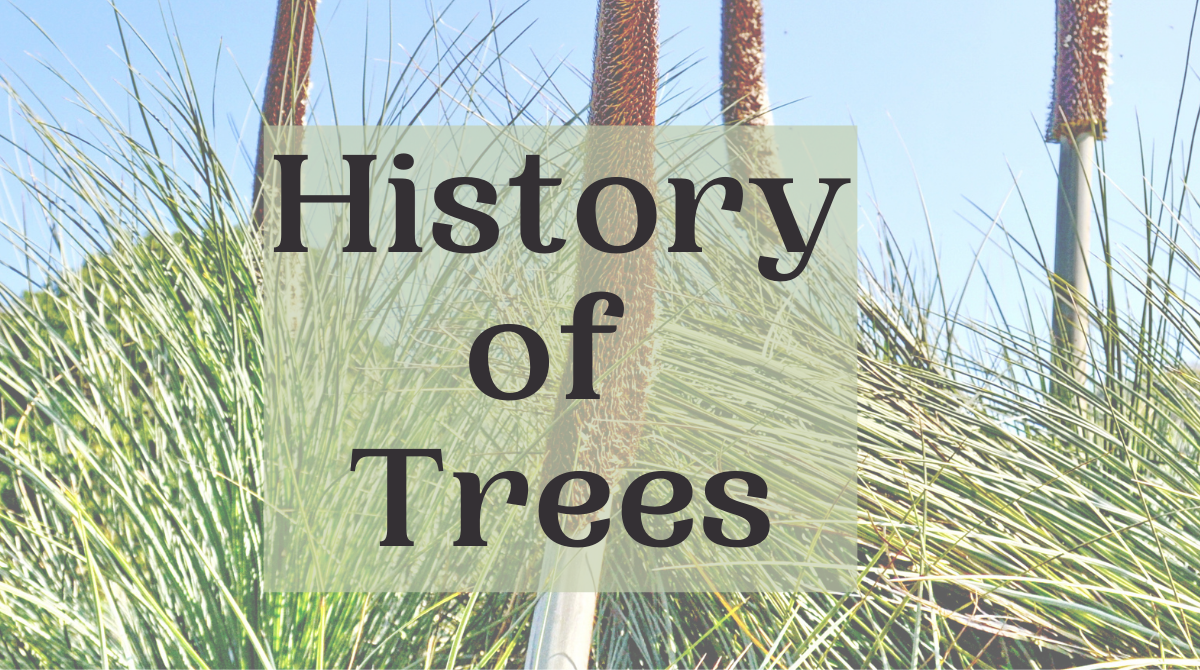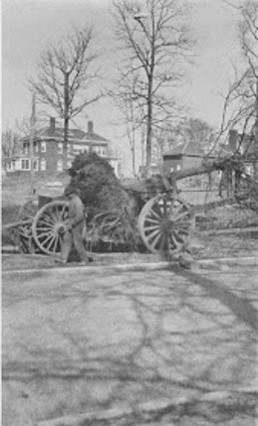A Brief History of Trees

Charlotte names new city arborist
4.19.21
Meet “the tree lady:” Jane Myers is TreesCharlotte’s new executive director
5.01.21
400 million years ago: Fossil records of the first tree-like plants appear, such as lycophytes, ferns, and horsetails. These types of plants did not have seeds yet, but were the first to have vascular systems, which was a big deal because that gave plants the ability to raise off the ground and form trunks and branches. Before this, all of earth’s plants had to live close to the ground, like mosses and liverworts.

Artist interpretation of Lepidodendron, a lycophyte tree common during the Carboniferous period. Image from University of California Paleontology website
380 million years ago: First evidence of seeded plants appear. These were very simple seeds that had no integument, or layer of protection, like we seed with modern seeds.
360 million years ago: Start of the Carboniferous period and first evidence of trees with “true” woody stems. These wooden trunks helped trees achieve greater heights and also improved water transport.
360 million years ago continued: We find the first fossil records of gymnosperms during this period. Gymnosperms are seeded plants in which their seeds are not protected by an ovary (or fruit). We have many species of gymnosperm today, including conifers (pines, junipers, spruce, etc.), ginkgoes, and cycads.
200 million years ago: Evidence of the first ginkgo trees.
150 million years ago: Evidence of the first pine trees.
125 million year ago: Angiosperms began to evolve, meaning we see the first flowers on earth! Angiosperms are plants that grow flowers and hold their seeds in a protective “ovary,” aka fruit. Earth at this time was much warmer and covered with rainforest, which diversified the angiosperm group dramatically. That’s why the majority of tree species we have around today are angiosperms. With the evolution of angiosperms, we also get the evolution of pollinators like bees, butterflies, and hummingbirds.
67 million years: Evidence of the first maple trees.
56 million years ago: Evidence of the first oak trees.
Fast forward several million years and trees continued to diversity and evolve into the trees we see today. Some go extinct, some improve, some stay relatively the same, and some are brought to Charlotte on wagons…

History of Trees in Charlotte
Pre-settlement: Charlotte was a mix of hard and softwood forest—primarily in the shortleaf-loblolly pine group and oak-hickory group.
Mid-18th century: Charlotte became popular amongst Europeans settlers. Trees were cleared for development and its fertile grounds were used as cropland.
Early 20th century: Landscape architect, John Noland, was brought in during the construction of neighborhoods around the city-center to add trees to the area. He and his team dug out mature trees from the nearby forests, carried them on wagons, and planted them in primarily the Myers Park area. Most of these trees were large oaks and some of them are still around today, shading our city.
Present Day: Charlotte still has impressive tree canopy for a city of its size, but that is rapidly changing. From 2012 to 2018, our city dropped from 49% to 45% tree cover, and the number continues to drop due to development, old age, and pests/diseases. Support our city this Earth Week by supporting our trees!


